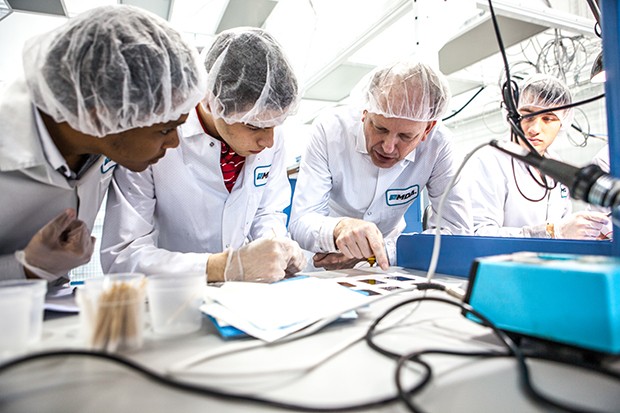Satellite-building Concordia students compete in final stages of space challenge
UPDATED ON MAY 30: Space Concordia finished second to the University of Victoria in the Canadian Satellite Design Challenge. In total, 11 teams started this competition; five made it to the final stage.
For Mehdi Sabzalian, Space Concordia’s ConSat-2 team leader, the most exciting part of the Canadian Satellite Design Challenge (CSDC) is clear: the winning design may actually be sent into orbit.
The ConSat-2 team is competing today in the last stages of the CSDC, a national competition that attracts university students from across the country. Concordia’s ConSat-1 team won the inaugural competition in September 2012; the second edition of the CSDC began in October 2012 and comes to a close this month.
From May 27 to 29, six teams are performing final tests at the Canadian Space Agency's David Florida Laboratory in Ottawa.
They’re vying for the chance to have their satellites launched into space. As a result, the competition is stiff — but the Concordia crew is determined to win.
“It took our team almost two years to get to this stage,” Sabzalian says. “The excitement helps us stay focused on our goals. Being so close to finishing, and the debt we owe to the people who helped us, is a big encouragement not to give up.”
The competition calls for each team to deliver a working 3U CubeSat: a satellite that measures 34 centimetres by 10 centimetres by 10 centimetres, with a maximum mass of four kilograms. The satellite then has to survive vibration and function tests.
The Concordia team’s entry, ConSat-2 a.k.a. “Aleksandr,” was created to test self-healing material in space. The material — supplied by Suong V. Hoa, professor in the Department of Mechanical and Industrial Engineering — may have the ability to prolong the lifespan of space structures.
“Designing something that has to function in space is very tricky,” Sabzalian says. “We did a lot of research to figure out what to do in every step. We also faced a lot of failures and design changes along the way.”
For the team’s supervisor Nadia Bhuiyan, an associate professor in the Department of Mechanical and Industrial Engineering, the competition is the culmination of an intense process.
“The difficult part is working on the project itself during school — balancing the pressures of coursework and the design, building and testing of the satellite during the academic year,” she says.
To raise the funds to build its satellite, the team launched a successful Kickstarter campaign last fall. The initiative brought in more than $15,000.
Outreach is also a major part of the competition, and the ConSat-2 crew took part in several educational activities in Montreal schools.
“The students are passionate, dedicated and very hard-working,” Bhuiyan says. “I think they have managed to inspire a lot of people and generate significant of interest in space.”
Right now, the team is pushing for a strong finish in the CSDC. They also hope to walk away with a fully functional, intact satellite.
“Space Concordia is doing its best to be represent Concordia and its students,” Sabzalian says. “We hope that, through our performance in this competition, we can elevate the university’s name even higher.”
Follow Space Concordia on Facebook and Twitter.
